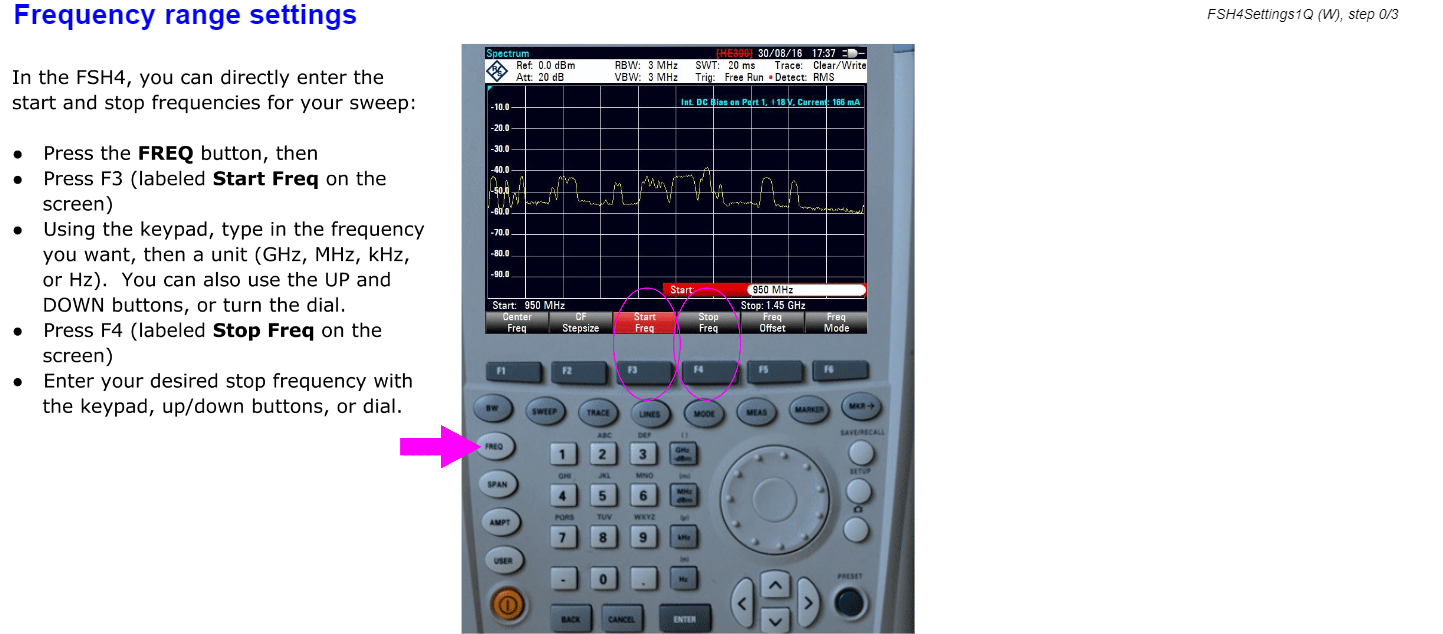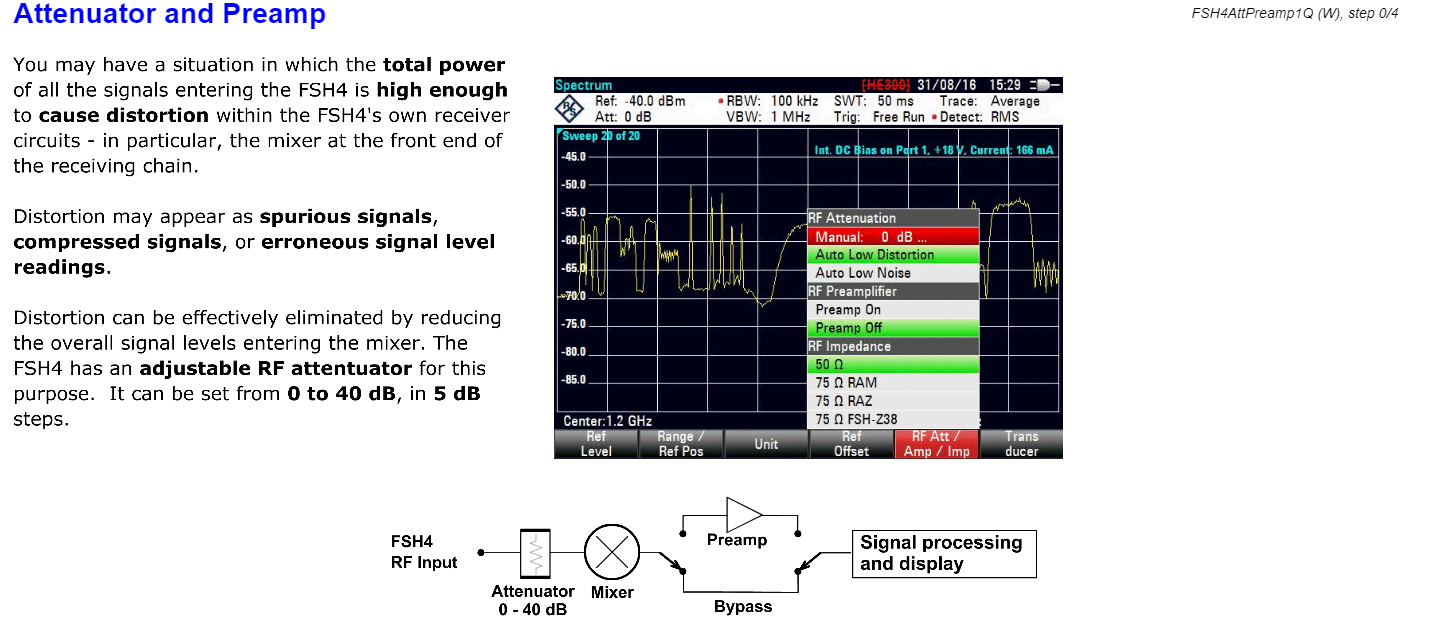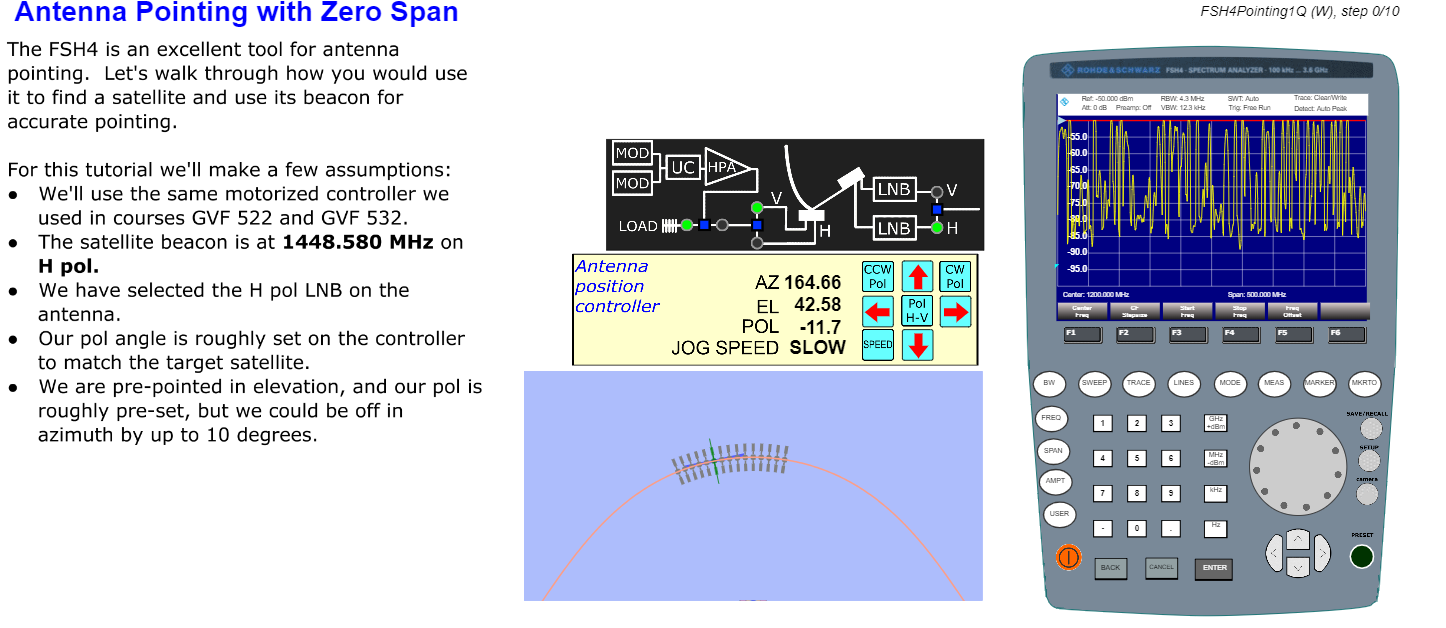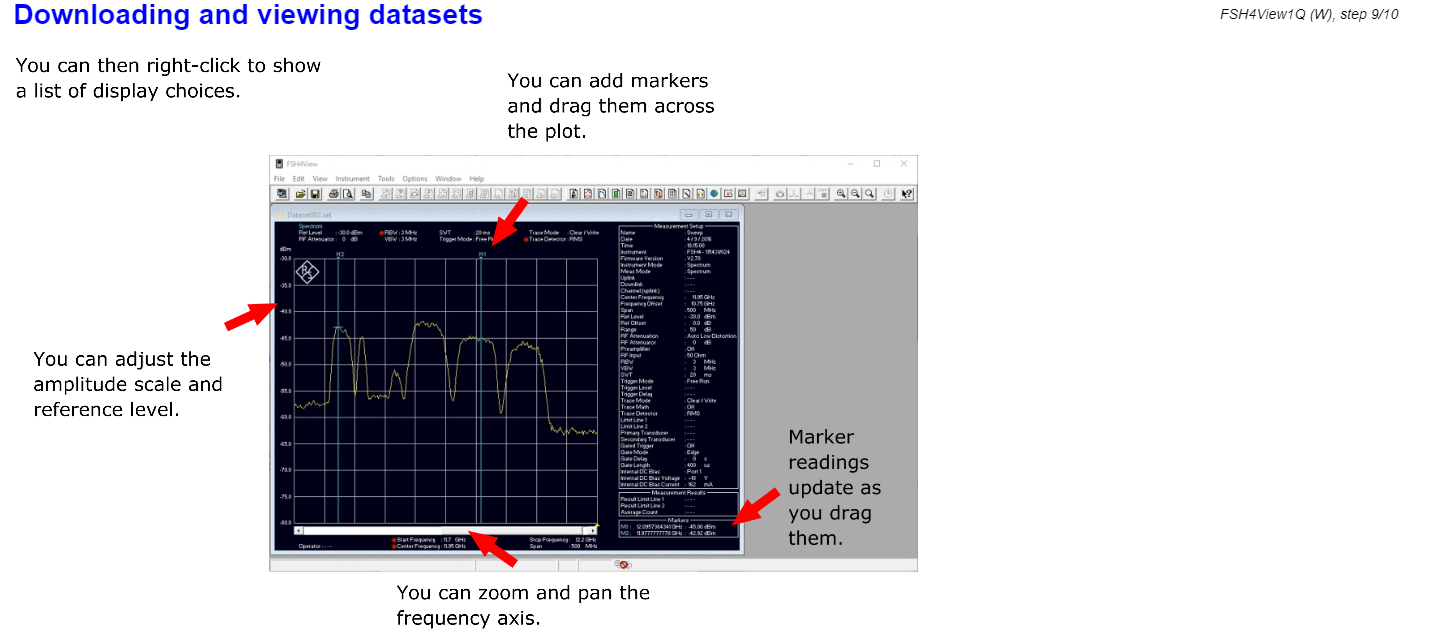Summary
-
How to use the Rohde and Schwarz FSH4 spectrum analyzer, with a focus on satellite communications applications.
Description
The Rohde and Schwarz model FSH4 is an advanced, highly flexible, portable spectrum analyzer, designed for wireless, microwave, satellite, and other RF and microwave applications. In this course we will apply the general concepts of spectrum analysis from GVF 522 to the specifics of using the FSH4 for satellite applications. We will learn about using the FSH4 controls and display, discuss optimizing settings for best display of certain signal types, work through some practical examples, and discuss some of the FSH4's advanced features. The course includes numerous videos as well as a live, interactive functional simulator of the FSH4.
Prerequisites:
GVF 520 and 522 recommended.
Audience:
Engineers and technicians who use the FSH4.
Delivery:
Animated & interactive HTML5, self-paced, on-line format. Requirements: internet access while studying the course material (high speed preferred ); current browser with JavaScript enabled; permission to access SatProf server and learning system websites; mouse.
Tests:
Each lesson contains a mandatory quiz. To pass the course, all pages must be viewed and all quizzes passed.Lessons
- The FSH4 interface and display, how to navigate the controls, and how to set up frequency, span, detector, and amplitude settings for basic measurements.
- The FSH4's capabilities for setting resolution bandwidth, video bandwidth, sweep time, and trace averaging, how they relate to each other, and guidelines for choosing appropriate settings. Display annotation features including display line and markers. How the FSH4's built-in attenuator and preamplifier work and how to select the best settings for them to reduce displayed noise without generating distortion within the instrument itself.
- Examples of using the FSH4 for common satellite communications measurements, including finding a satellite by observing its downlink spectrum, looking for beacons and zooming in on them to avoid their sidebands, using the FSH4 as the meter when performing antenna beam-balance pointing, measuring noise and carrier-to-noise ratios, converting between (C+N)/N and C/N, and finding and measuring intermittent signals, such as burst TDMA carriers and interference.
- Selected advanced features and capabilities of the FSH4, including setting input impedance with a matching pad, using the FSH4View companion software on Windows, taking screen shots, working with datasets, additional operating modes such as Vector Network Analyzer, Scalar Network Analyzer, Power Meter, and additional specialized functions that the FSH4 can be equipped to perform. Samples



